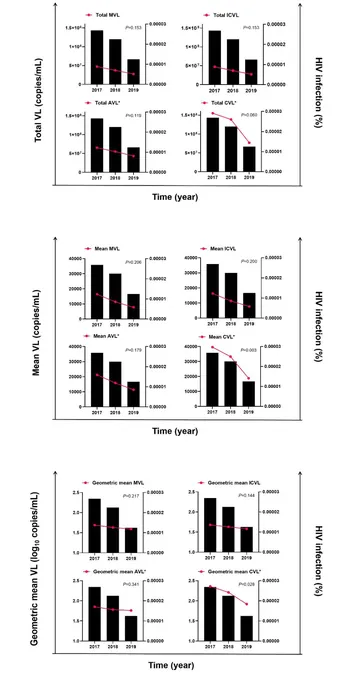
Shocking New Findings on HIV Transmission Potential in Xinjiang: Community Viral Load May Hold the Key!
2025-01-11
Author: Li
A Groundbreaking Study Unveils the Link Between Community Viral Load and HIV Transmission
In recent years, new methodologies for understanding human immunodeficiency virus (HIV) transmission have been gaining traction, with recent research focusing on community viral load (CVL) as a potential key indicator of HIV transmission dynamics. Conducted in Yining, Xinjiang, from 2017 to 2019, this prospective cohort study aimed to monitor the viral load of those living with HIV (PLWH) to explore how these indicators could steer community health responses.
Study Background and Methodology
This pioneering study sought to identify how different population viral load (PVL) indicators relate to HIV transmission rates. A dynamic cohort was established to track the viral load of PLWH in the community over three years, assessing various PVL surrogate indicators. The results are critical in not just measuring the epidemic’s intensity but also evaluating the effectiveness of community health efforts.
Key Findings: A Decrease in Community Viral Load Correlates with Lower HIV Incidence
The researchers reported a significant reduction across all PVL indicators from 2017 to 2019, with particularly strong correlations found between arithmetic mean and geometric mean CVL and HIV incidence, antiretroviral therapy (ART) coverage, as well as rates of viral unsuppression. High CVL was particularly prevalent among specific demographics: males, individuals aged 25 and under, those with a primary education level or below, and individuals engaging in non-marital heterosexual contact.
The study revealed alarming findings in certain communities, indicating hotspots of HIV transmission, which warrant urgent public health interventions. For example, community 10 had the highest CVL, alongside the lowest ART coverage, showcasing a dire need for targeted outreach in those areas.
Context: Evolving Dynamics of HIV Transmission
The landscape of HIV epidemiology has dramatically shifted over the past decades, with treatment-as-prevention (TasP) strategies at the forefront of control efforts. The concept hinges on the idea that early engagement in ART can lead to viral suppression, thus reducing overall transmission rates. However, measuring individual HIV incidence can be cumbersome and costly. The use of communal measures such as CVL offers an economical and effective alternative.
A Call for Targeted Interventions
This study is especially pertinent for regions like Xinjiang, recognized for its high HIV incidence. With CVL serving as a feasible indicator, health officials can better identify at-risk populations and implement focused interventions. Notably, the study highlighted how demographic characteristics influenced CVL levels, emphasizing the importance of tailoring prevention programs for young individuals and specific social behaviors.
Conclusion: CVL as a Game Changer in HIV Monitoring
In summary, the research underscores that CVL can effectively gauge the potential for HIV transmission within communities, thus enabling health authorities to fine-tune their strategies. The annual decrease in CVL in Yining is a hopeful sign of improved control measures, yet it also serves as a reminder of the ongoing need for vigilance and adaptation in public health efforts.
With this study paving the way for new preventative methodologies, the fight against HIV may yet see significant advancements—time to rally together for a healthier tomorrow!

 Brasil (PT)
Brasil (PT)
 Canada (EN)
Canada (EN)
 Chile (ES)
Chile (ES)
 Česko (CS)
Česko (CS)
 대한민국 (KO)
대한민국 (KO)
 España (ES)
España (ES)
 France (FR)
France (FR)
 Hong Kong (EN)
Hong Kong (EN)
 Italia (IT)
Italia (IT)
 日本 (JA)
日本 (JA)
 Magyarország (HU)
Magyarország (HU)
 Norge (NO)
Norge (NO)
 Polska (PL)
Polska (PL)
 Schweiz (DE)
Schweiz (DE)
 Singapore (EN)
Singapore (EN)
 Sverige (SV)
Sverige (SV)
 Suomi (FI)
Suomi (FI)
 Türkiye (TR)
Türkiye (TR)
 الإمارات العربية المتحدة (AR)
الإمارات العربية المتحدة (AR)